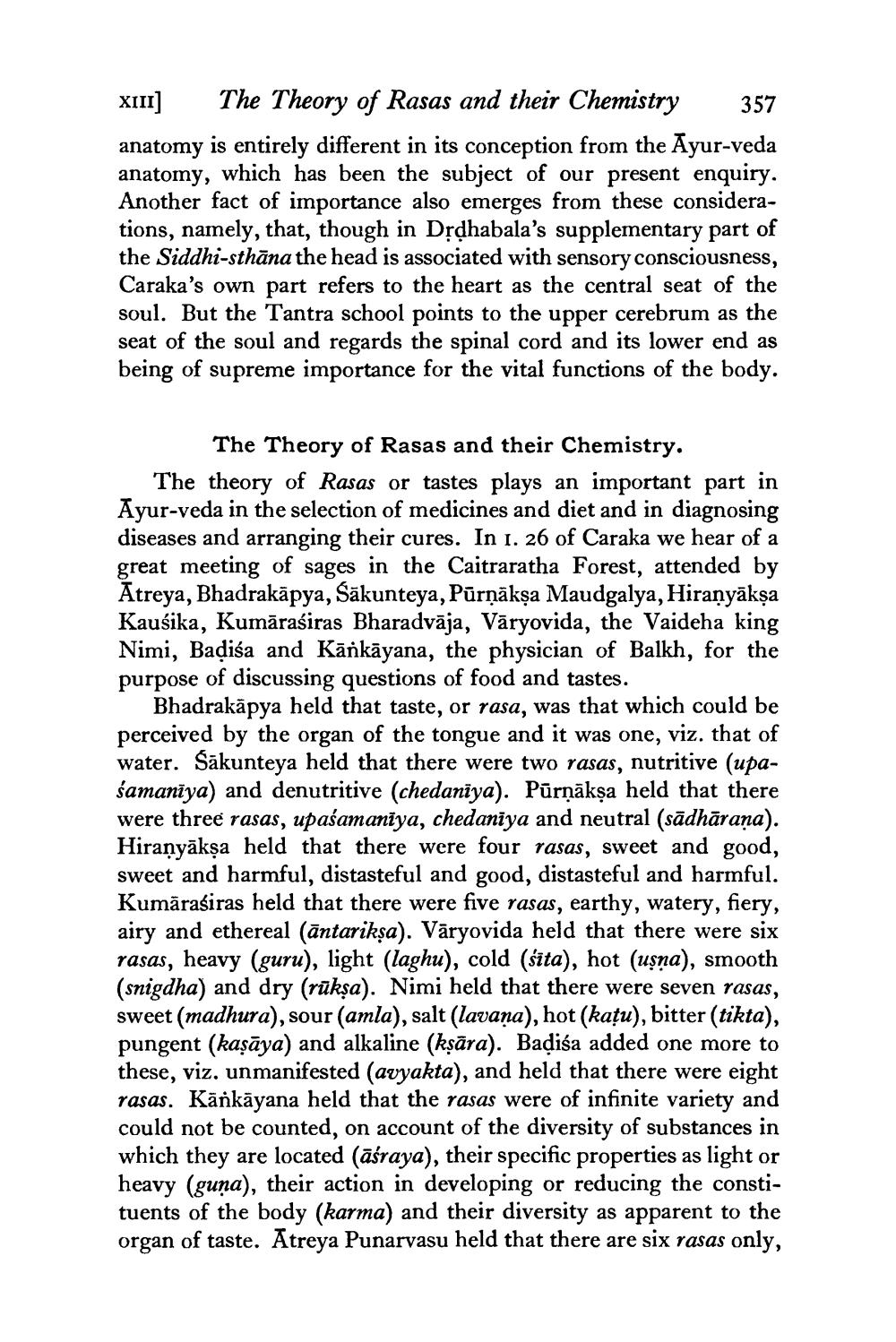________________
XIII] The Theory of Rasas and their Chemistry 357 anatomy is entirely different in its conception from the Ayur-veda anatomy, which has been the subject of our present enquiry. Another fact of importance also emerges from these considerations, namely, that, though in Dưdhabala's supplementary part of the Siddhi-sthāna the head is associated with sensory consciousness, Caraka's own part refers to the heart as the central seat of the soul. But the Tantra school points to the upper cerebrum as the seat of the soul and regards the spinal cord and its lower end as being of supreme importance for the vital functions of the body.
The Theory of Rasas and their Chemistry. The theory of Rasas or tastes plays an important part in Ayur-veda in the selection of medicines and diet and in diagnosing diseases and arranging their cures. In 1. 26 of Caraka we hear of a great meeting of sages in the Caitraratha Forest, attended by Atreya, Bhadrakāpya, Sākunteya, Pūrņākṣa Maudgalya, Hiraṇyākșa Kausika, Kumāraśiras Bharadvāja, Vāryovida, the Vaideha king Nimi, Badisa and Kānkāyana, the physician of Balkh, for the purpose of discussing questions of food and tastes.
Bhadrakāpya held that taste, or rasa, was that which could be perceived by the organ of the tongue and it was one, viz. that of water. Sākunteya held that there were two rasas, nutritive (upaśamanīya) and denutritive (chedaniya). Pūrņākṣa held that there were three rasas, upaśamanīya, chedaniya and neutral (sādhārana). Hiraṇyākṣa held that there were four rasas, sweet and good, sweet and harmful, distasteful and good, distasteful and harmful. Kumāraširas held that there were five rasas, earthy, watery, fiery, airy and ethereal (āntariksa). Vāryovida held that there were six rasas, heavy (guru), light (laghu), cold (śīta), hot (uşna), smooth (snigdha) and dry (rūkņa). Nimi held that there were seven rasas, sweet (madhura), sour (amla), salt (lavaņa), hot (kațu), bitter (tikta), pungent (kaṣāya) and alkaline (kşāra). Badisa added one more to these, viz. unmanifested (avyakta), and held that there were eight rasas. Kārkāyana held that the rasas were of infinite variety and could not be counted, on account of the diversity of substances in which they are located (āśraya), their specific properties as light or heavy (guna), their action in developing or reducing the constituents of the body (karma) and their diversity as apparent to the organ of taste. Atreya Punarvasu held that there are six rasas only,




